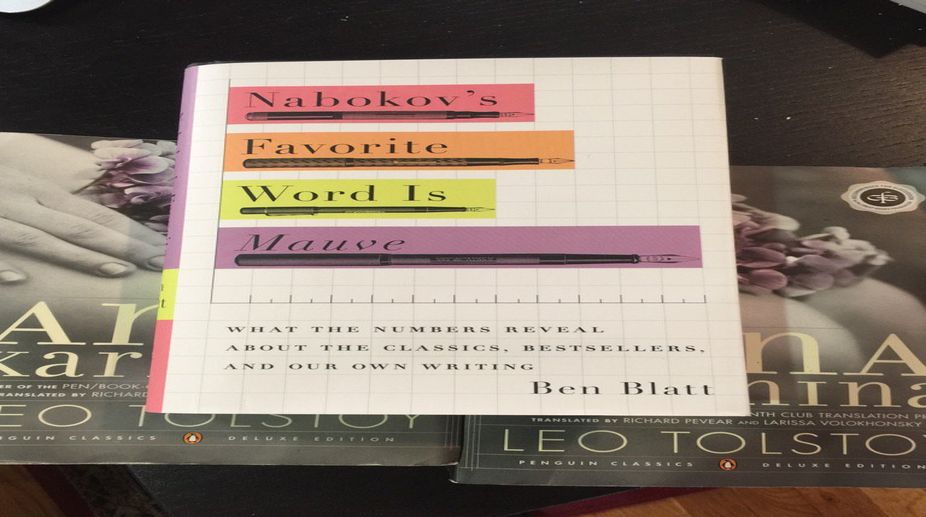From file notings to fine literature
The pen may be mightier than the sword, but why professional civil servants take to writing, especially after their retirement, perhaps like no other group of professionals, requires some introspection.

Nabokov’s Favourite Word is Mauve (PHOTO: TWITTER)
An interesting theory has recently been posited by an author who has proved the value of statistics when a book is judged. Before we read about this author’s radical dimension of assessing writers through their books, let us read three examples of opening sentences, written by famous writers who were awarded The Nobel Prize for Literature. There could be common factors in the beginning and subsequently these factors could be added for each writer who has written several books. Perhaps that common factor, in higher numbers, could result in a “good” novel.
(The opening lines of poem no 57, in Gitanjali or Song Offerings by Rabindranath Tagore, who was awarded The Nobel Prize for Literature, in 1913)
Advertisement
In each of these examples, the element of colour has been used to convey to the reader its interpretation in the narrative. In Lord of the Flies, Golding begins with a fair haired boy to describe a young child who moved towards a “lagoon”, enunciating to the reader that the lagoon was part of the blue sea; in fact, this narrative involves a group of British kids, many whom are fair haired and who are stranded on an island in the Pacific. This sets the stage for the entire book.
Advertisement
In the second quote, Tagore has used the power of light, which accentuates the vivid colours of nature’s beauty through the dazzling hues of butterflies, lilies and jasmines. He extols the power of sunlight, without which such beauteous colours would never be seen.
Hemingway begins with focusing on an old man — the protagonist of his famous book. He highlights to the reader an old man who would, of course, be with grey hair and beard, and explains that this man is happy to be alone, even on the blue expanse of the high seas, alluding to the Gulf Stream, a significant maritime current, which plays a role in the narrative.
These examples are random views with the new theory of statistics, in assessment of books, and a statistician would list the number of opening lines in an author’s books where colour is used. A percentage is thus calculated and that may help rate the book.
Nabokov’s Favourite Word is Mauve: What the Numbers Reveal About the Classics, Bestsellers, and Our Own Writing by Ben Blatt, published in March, is a tome where data meets literature to discuss an amazing phenomenon related to our favourite authors and their masterpieces. Readers tend to neglect many words, which in a novel is worth thousands of data points.
Blatt, a journalist and statistician, created a database of the text from a few 20th century classics and bestsellers, to quantify his findings. His analyses revealed patterns that could have been unnoticed by critics.
Blatt stores this information into his database. Vladimir Nabokov used the word mauve 44 times and this was more than an average writer in the last two centuries. Blatt was asked in an interview about this statistical approach. He clarified that as a data journalist he prefers studying inputs quantitatively and in an unbiased manner; he enjoys analysing information through statistics knowing that they will enlighten readers on a writer’s style and one can thus unearth trends in their writing
Advertisement